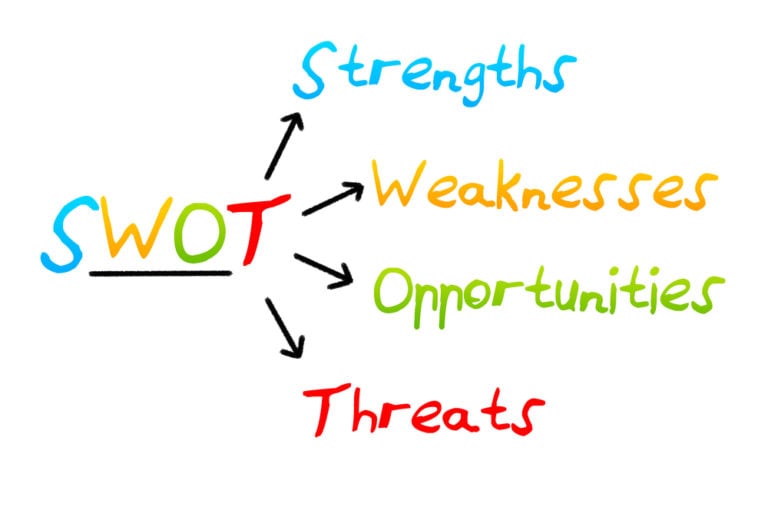When companies are faced with the process of introducing a new product to the market or developing marketing strategy for existing products, there is a need to search or revise target consumer segments. It is important for companies to understand who their customers are and what needs their product/service satisfies in the market. Selling everything to everyone is neither possible nor necessary. But how to identify those same target consumer segments? Let’s understand the article.
Definition and objectives of market segmentation
Market segmentation is the process of dividing consumers into groups that have their own specific requirements for a product and have similar needs and consumer reactions.
These are unique filters with certain characteristics that allow companies to “hit the target” with their products, due to the fact that the offer will be aimed at a narrower group of consumers.
During the segmentation process, a target audience (one or more consumer groups) is determined, knowledge of which allows you to create personalized offers. Segmentation allows businesses to minimize errors and make the right decisions.
The main goals of segmentation are:
- meeting consumer needs;
- formulation of the product’s competitive advantages and points of differentiation;
- increasing marketing efficiency in the company;
- creating personalized offers for consumers;
- transition to new consumer segments (narrower ones, for example).
Necessary conditions for segmentation:
- presence of a buyer’s market (market of abundance);
- large market volume (growth prospects)
- availability of reliable information about current market conditions.
Stages of market segmentation
The market segmentation process usually includes several standard steps:
- segmentation;
- selection of target segments;
- positioning;
Segmentation
Includes the collection of data on consumer groups, market conditions, and analysis of the competitive environment.
At this stage, it is necessary to collect as much information as possible about potential consumers, their triggers, and using this information, divide them into separate segments/niches, uniting them with similar characteristics according to given criteria. It is recommended to add information on the number of competitors to each niche.
Selecting target segments
At this stage, it is necessary to analyze each of the segments under study for profitability and existing barriers to entry into the segment, then rank the segments according to the level of potential and the degree of their prospects for business.
Positioning
At the positioning stage, the key needs of the client and points of product differentiation are searched. Based on this data, a communication strategy and marketing tools are developed for each segment.

Indicators that help to correctly group segments are:
- Measurability. Shows the extent to which the volume and purchasing power of a segment can be measured.
- Availability. Determines the extent to which a given segment can be influenced and serviced.
- Profitability. Indicates the degree of profitability of the segment in the market.
- Possibility of development. The extent to which it makes sense to develop special programs to attract and serve segments.
- Compatible with major competitors. Determines the extent to which the interests of competitors in a given market segment are “affected.”
These metrics can be used when you need to verify the validity of the selected customer segments.
It is worth clarifying that the object of segmentation can be not only consumers, but also product and business markets (B2B, B2C, B2G), competitors (direct, indirect), etc.
Market segmentation methods
One of the most common methods of market segmentation is segmentation by attributes.
In total, there are several key characteristics by which the audience is divided into consumer segments.
- geographic
- demographic
- socio-economic
- psychographic
- behavioural
Geographical – division of the market based on geographical differences: country, region, urbanization (city/village), region, climate. For companies that operate offline, this feature can be extremely important, since it may be necessary to search for a territory to enter the market and external factors that may affect purchasing power.
Demographic – division of the market based on demographic differences: age, gender, civil/marital status, family composition, family life cycle, important events in the lives of consumers. These signs show how consumer preferences and tastes will be formed.
Socio-economic – division of the market based on socio-economic factors. These include: income level, area of employment, type of activity, education. When formulating socio-economic characteristics, the motivation for consumer behavior is determined.
Psychographic – division of the market based on the following differences: image (lifestyle), social class, personality type, life position, attitude to innovation, consumer values, idols and leaders for the segment. Based on these characteristics, the consumer’s personality type and the level of internal motivation based on consumer triggers are determined.
Behavioural – division of the market based on: attitude towards the product, purpose of consumption, degree of use, intensity of consumption, degree of loyalty, purchase expectations, buyer status for the company. These features are determined with the aim of clearly understanding and predicting the consumer’s reaction to the product and modeling the purchase decision-making process.

An alternative market segmentation technique is Mark Sherrington’s 5W technique. The bottom line is that the target audience is determined based on 5 key questions, the answers to which become the basis for identifying consumer segments:
- What? What product/service does the consumer need? This is the identification of specific goods or services from the company’s product portfolio.
- Who? Who is your customer who needs the product? At this stage, the portrait of the consumer is determined.
- Why? Why does the consumer need your product? Why should he buy from you? Advantages, advantages, added value.
- When? When will the consumer need the product? In what situations and circumstances can a purchase be made?
- Where? Where do customers decide to buy, will they make a purchase, where will they receive their order? Determining common points.
Market coverage strategies taking into account segmentation
Taking into account the peculiarities of market segmentation, there are three main market coverage strategies:
- undifferentiated (assortment)
- concentrated
- differentiated
Undifferentiated (assortment) strategy
The essence of the strategy: satisfying the maximum number of customers due to common interests and consumer preferences, and not based on specific needs. In this case, the company focuses its attention and efforts on the common needs of consumers that unites them, and not on what distinguishes them. Example: bread, water, matches.
Concentrated strategy
Using a concentrated marketing strategy, a company chooses one product and one segment on which to concentrate its efforts. Instead of seeking a small share of a large market, a company seeks a large share of one or a limited number of small markets. Example: sports nutrition, dietary products.
Differentiated strategy
The essence of the strategy is the selection of a specific product for each segment. In this case, companies focus their activities on two or more market segments and develop separate consumer offers. Example: household chemicals, banking services.
Market segmentation example
Let’s imagine that a bakery is brought to the market in a residential area of the city N, the assortment of which is represented by freshly baked bakery products.
In this case, the priority consumer segments will be:
- Geographical (city, region, climate)
- Demographic (age, gender, marital status)
- Socio-economic (income level, social status)
- Psychographic (lifestyle, personality type, values)
- Behavioural (attitude towards the product, intensity of consumption)
Thus, it is worth concluding that market segmentation allows a company to:
- create personalized consumer offers of goods and services, increasing conversion
- increase consumer loyalty
- identify emerging consumer needs
- highlight points of differentiation for successful positioning
- manage and optimize the company’s marketing strategy
- increase the strength of the company’s brand through an effective communication strategy in the “company-consumer” system
- improve the quality of customer service.










